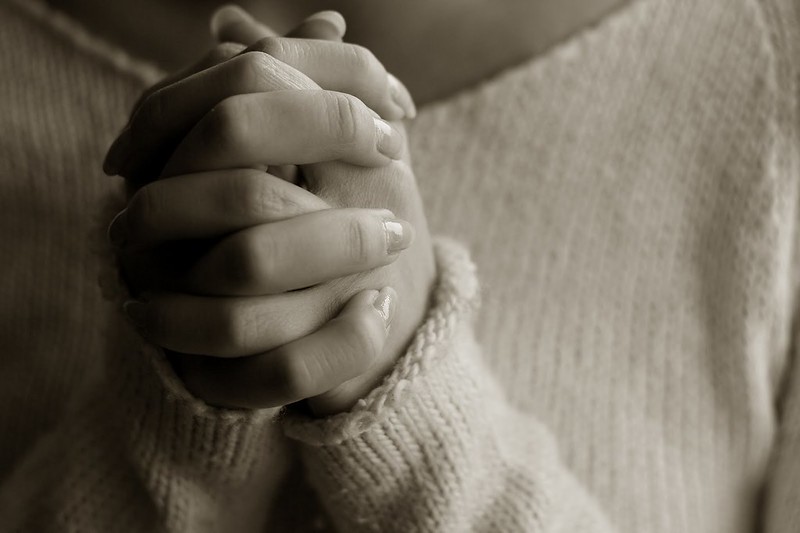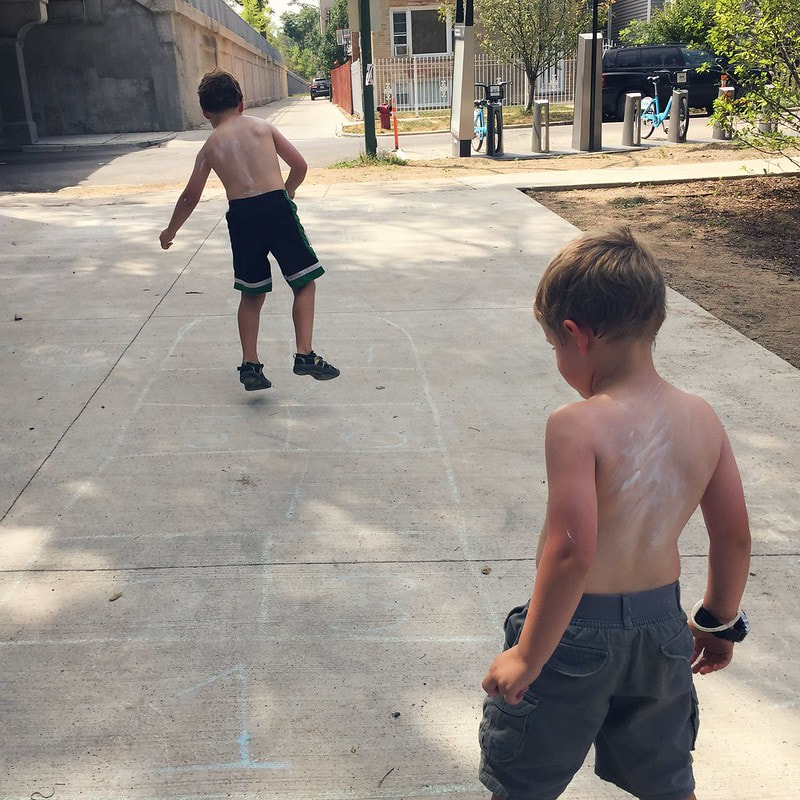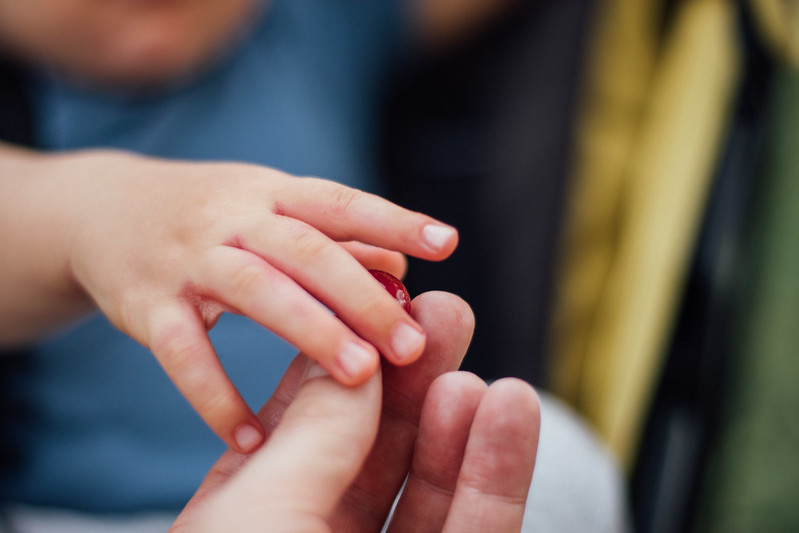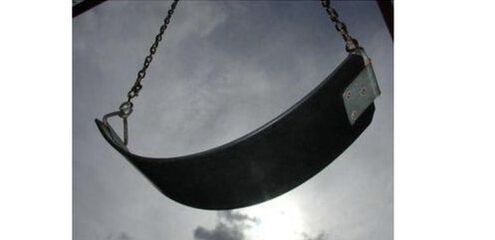|
You have likely heard the term “fight or flight” to describe what people do in response to frightening situations. For example, when you come face-to-face with a bear, are you likely to swing at the animal with a weapon of some kind or do you run? If the example of the bear does not create this kind of an association for you, consider a vicious dog who managed to break loose from the chain after it had been barking at you when you were walking by. Now, it is sprinting towards you… While these labels begin to describe our typical reactions to frightening situations, they do not capture the in-depth present-day experience that we also need to consider to understand trauma. In modern day society, frightening situations can encompass the human experience of emotional trauma rather than a dangerous dog or a bear in the wilderness. WHAT ARE THE FOUR F’S OF TRAUMA RESPONSE? Most people are aware of the two F’s: fight…or flight… However, the four different trauma responses individually describe a set of reactions that we may experience when we are faced with a threatening or abusive situation. It may be that people attain these trauma responses as a mechanism to survive in childhood or in a psychologically abusive relationship. Both of these are examples that refer to a series of traumatic events and not a single traumatic incident. However, the same is true when people go through a single traumatic experience, such as a physical assault or a natural disaster. Then, every time you face anything you perceive as a threat, it is likely that you default to the same types of responses. There are four types of trauma responses that are widely recognized in the mental health field and they are as follows:
When we recognize the trauma responses in our own thought processes or behavioral patterns, then we can better understand our own actions. For many people, that is the first step toward change and healing. Then, when faced with a difficult situation again, we are more likely to choose the best response, rather than defaulting to learned behaviors. WHAT IS THE FIGHT TRAUMA RESPONSE? The fight trauma response serves the goal to protect yourself in an aggressive manner against the threat and has the purpose of self-preservation. Sometimes, the fight response is helpful and healthy. For example, if a wild animal threatens you and you shoot or trap it, you have responded to a threat in an appropriate way. Similarly, if someone speaks to you in a demeaning or abusive way, you might say, “I will not let you speak to me that way,” which is a healthy fight response. Here are some positive ways that the fight trauma response can help you:
However, when someone has been exposed to prolonged or intense trauma, the fight response can become unhealthy. For some people, it’s like the threat of the vicious dog never went away. So they are always on high alert, ready to fight. An unhealthy fight trauma response can lead to:
Sometimes unhealthy fight responses turn inward. People can feel incredibly angry at themselves for seemingly no reason. If you have had unhealthy fight responses in the past, take time to be compassionate with yourself. You may have learned these behaviors in order to survive and be safe. That’s okay. It doesn’t have to be like this forever. Therapy is an excellent tool for changing the behavioral patterns, even the ones that are deeply ingrained. WHAT IS THE FLIGHT TRAUMA RESPONSE? When the threat seems insurmountable people are likely to engage in avoidant behaviors as a response to dealing with the circumstance, sometimes to the point of isolating from everyone. This response might be observed, for example, in a child who dashes from his classroom when distressed or an adolescent who elopes from her foster home when feeling rejected or threatened. This is the flight trauma response. Like with the fight response, flight can be either healthy or unhealthy. In healthy situations, a flight response to stress can help you:
When trauma is involved, an unhealthy flight response may lead to:
Many of these responses are attempts to outrun or out-work the perceived danger. WHAT IS THE FREEZE RESPONSE? Though not as well-known as fight and flight, the freeze response is one with which many people are familiar. In nature, you might recognize it as “playing possum.”However, in humans freezing manifests as an inability to communicate, react or take any action of self-preservation or defense; Instead of trying to fight the danger or run away, there is a pause. For example, when a child is not able to fight or run from perceived danger, it triggers a panic response, making one numb or immobile in the face of the threat. The healthy freeze response can look like:
When someone habitually reacts to stress with an unhealthy freeze response, it can cause:
Some people get stuck in using the freeze response because they fear the danger will still exist when they “thaw.” It’s important to learn healthy ways to deal with a real or perceived danger, rather than completely shut down. A therapist can help you learn to use the freeze response in a healthy way. WHAT IS THE FAWN TRAUMA RESPONSE Fawning is the least known trauma response and the most recent addition to the primary trauma reactions towards perceived threat. Fawning is primarily related to people-pleasing in the context of maintaining the sense of safety at the expense of getting one's own needs met. For example, when a child learns to cope by taking care of the parent’s emotional needs, that child is relying on a defense structure called “fawn” response. A healthy fawning response can facilitate:
Sadly, people who have been in some kind of relationship with a toxic person often develop unhealthy fawning responses. The fawn response to trauma can cause:
Do you recognize yourself in any of these unhealthy trauma responses? Even if you don’t think your past is “bad enough” to warrant therapy, you may benefit from it. The truth is that almost everyone has something they could work through in therapy! Learning to respond to stress in a variety of healthy ways can help you in many areas of life.
0 Comments
 It is so easy to go through the day to day activities while being on auto-pilot or unaware of the present moment. I mean, we all do it. Are you aware of this moment..? How about this one..? I challenge you to be in the moment (no thinking about what to make for dinner or when to find the perfect time to cut the grass). There are two verbs that I would like to bring to your attention: “be” and “do.” As part of the western culture, it is common to hear one say, “What are you going to do tonight?” Nobody says, “What do you be?” I would even like to venture out to say that the language inhibits living in the moment, which therefore makes it difficult to become familiar with being in the moment. But even though “be” does not seem natural, let’s give it a try and see what we can discover when we practice being in the moment. The point of this notion is that only when you teach yourself to become aware of the moment can you truly understand the needs of the Self. When I talk about the Self I refer to the core of who you are - the combination of physiological, emotional, and spiritual entity. (I am leaving out the social entity right now for a reason). Yes, we have a very little idea of what the Self is, let alone are aware of the needs of the Self. I believe that in order to understand the Self and then connect the Self with the outside one needs to take on a journey of transitioning. What’s the meaning of this journey? Well, through self-discovery comes awareness… Put it in a different way, as part of self-discovery (the journey), I believe, you will begin to ascertain your story and then tell it to others as you are meaningfully connecting with others. This is the story that helps to identify your Self. And as we connect with others, identifying our supports and socialization needs, we will move towards healing. When I encourage you for self-discovery I would like to emphasize the importance of taking the STEP towards the journey because that step is what brings about change and transformation - healing. Not the outcome, but rather the process and movement are needed... I recall how in my childhood there was this game that I would play with my best friend. See how much I can trust you. She would turn her back towards me, stand a step or two away from me and then fall backwards… just to see if I’d catch her. Then it was my turn… But it was just one step to “prove” how much one trusted the other. Do you trust to take that step to begin your journey of self-discovery? We cannot look at how to find the healing through the traditional medicine only, but rather the healing power that comes within YOU deciding to change wholly. There is power hidden inside of you to make the choices for finding your Self. Make your child feel safe. When your child has gone through traumatic experience, slow down and consider what he needs. What he really, really needs. Safety is a vital part of recovery. Having open conversations about how to feel safe and about what worries him is important. If he seeks you out more often than is typical, it’s ok. He may find extra hugs to be soothing. He may also seek out extra cuddle time or a pat on the back. Touch (only when it is welcomed) is a healing part of trauma and gives the child a feeling of security. When your child has experienced trauma your comfort and support help him on the path of a healthy and desirable recovery. As a parent or a caregiver, it may be quite difficult to witness your child dealing with the aftermath of traumatic event. You may experience guilt for not having been able to protect your child or have questions why this happened to him. However, no matter what, you are now the person who can actively participate in this child’s recovery from trauma. I would like to share several steps that will empower you and your child.
Educate yourself. There used to be a common belief that when children experience trauma, they will be too young to remember… or that they will outgrow the bad memories. However, the research shows that this is not the case and that it is more important to talk to your child about what they have gone through. Consider the child’s developmental age as you engage him in the dialogue about what they thought happened and what they need to feel safe and well again. Often times, children who have experienced trauma tend to act out more and experience decreased tolerance for frustration. Tantrums… meltdowns… We all have a name for these behaviors. However, someone who has been traumatized engages in these behaviors because this is his way of asking for help or saying that something does not feel right. Instead of punishing the child for the behavior, you now become the detective to identify what is the root cause for his behaviors and help him problem-solve. Examples of when the child may act out is when he experiences hypervigilance or heightened anxiety. Turn to the professional. Although, anxiety among other issues may last for several months after the traumatic event, reach out for immediate help if you notice that your child is experiencing panic attacks, becomes paranoid, or has thoughts of wanting to harm himself. PTSD is such a complex diagnosis and in order to understand it the best way possible, it is necessary to reach out for help from professional. Even though there is much stigma related to mental illness, it is better to be proactive and talk to the professional as you create healing environment for your child, which then also supports the idea about the safety. Even though, not every traumatic event will lead to PTSD diagnosis, it is better to be proactive and allow the professional to offer you and your child necessary support. Besides, when your own mind is in worry mode it might be helpful to get the outsiders perspective anyways. Professional can also offer resources that are useful overall. Even if it is some books that talk about PTSD. There are several out there for children and adults. Structure, consistency, and routine – key in recovery! Often times, when child has experienced trauma, he needs reassurance of knowing what is going to happen in 5 minutes… one hour… one day or a week from now. It does not mean that you have to have your days filled with activities but rather that you have scheduled relaxation time, work time, chore time, and play time. This is important so that the child can predict what to expect next. In order to accomplish this task, it might be helpful to implement chore charts or daily activities charts so that the child can keep track of what to expect next. This is empowering to him and will make you feel better. Having the routine in place offers reassurance to the child that life will be manageable again because traumatic event brings chaos and uncertainty. By setting the routine for the day, it helps the child to know what to expect and most likely relieves the triggers. Be gentle with transitions and change. Some children may need to know about when change happens as soon as possible. When there is a structure in place, it offers control as well as a way to know what is about to happen. This is especially true during the transitioning times when you need to take the child to school, to the grocery store, doctor’s appointment or when there are people coming over. Learn from your child what works best: if you should let him know way early or minutes or hours ahead of time. Some children who have symptoms of anxiety can also perseverate on the worries that they have, which may make things worse. So, telling them too early may lead them to think about it non-stop and this would not be beneficial. Remember, change can be a trigger for someone with traumatic experience. There are other triggers to consider, such as loud noises or when you expect company. Depending on the trauma, as a caregiver, you need to become mindful of what might set your child off. It is easier to have a plan and be proactive rather than put out fires. Choices are empowering. When your child experienced trauma, he did not have a choice to leave the situation but rather endured the circumstances with the lack of control. People who have been exposed to trauma desire to maintain control in order to feel safe. Children with the trauma history may come across as manipulative if they are not given enough opportunities to exercise control in their environment. As a caregiver or a parent, you can offer control during mealtime when you make couple of different choices for food available to your child. Another way to offer control is by letting him choose what clothes to wear for the day. Of course, these are just couple of examples where your child could exercise control with no negative outcome. Use your creativity and stay a step ahead of him so that you can come up with ways he can feel like he is in control. Building on his strengths. Think about the different things your child enjoyed doing before the traumatic event. Did he engage in any sports, play outdoors, or have friends over? Encourage him to return to some of these activities as any enjoyable interest will help the child to return to normalcy and increases his self-confidence. Additionally, having friends over or visiting relatives offers a perfect opportunity to engage in social skills rather than being withdrawn. When the child enjoys himself in the aftermath of trauma, he will feel distracted and this is good because he experiences a sense of normalcy and is able to forget about the traumatic event – even if for a short period of time. Make a safe place. When your child feels overwhelmed or triggered give him the chance to go to his safe space. When we think about PTSD, safety is an essential part of the recovery process. For your child the safe space can be a part of the room or even a corner in the room specially designed for him with some floor pillows, squishy balls or fidgets, or anything else that he might find helpful as he calms his body and mind. Recognize and validate your child’s feelings. If your child expresses worry, do not downplay his worry by saying “there is nothing to worry about” as he may feel then like his feelings do not matter. Downplaying his feelings may lead him to feel embarrassed or that he is being criticized. There are good days and bad days. Consider that your child’s abilities vary daily. There are days where it may seem that he is getting better and that he is moving in the right direction; he demonstrates how he is able to focus on tasks and finish what you have asked of him… AND there are days where he does not pay attention, and instead, his behaviors show regression. I would like to encourage you to allow him space to deal with these changes. Just kind of like adults in any given day, children also have good days and bad days, but especially so when they are trying to figure things out in the aftermath of trauma. Children cope in different ways; some children enjoy being distracted by their friends and desire to spend time with them. There are other children who prefer to be alone. Let your child know that it is ok to feel anger, sadness, and/or guilt. Talk to your child about feelings. Help him identify different feelings. This activity is important because sometimes children have a difficult time recognizing what they are feeling. “I’m right here.” This is a simple and meaningful phrase that positively impacts your child. Considering the trauma that your child has experienced, the most important thing you can offer to your child is you. No matter what – show up for your child. Be reliable and constant. Your child looks to you for reassurances after the traumatic events have taken place. Do not discuss your anxieties related to the event with your child or when he is around. It is important to be aware of the tone of your voice because your child is tuned in to you, and even if you don’t think he is listening – he is. However, it is important to talk to your child about the traumatic event and allow him to ask questions. It is better for him to get the information from a safe and trusted adult. Don’t assume that your child is worried about the same aspects of trauma as you are. It is better to model openness and honesty to your child and have a dialogue about the traumatic event because the transparent communication teaches your child that it is ok for him to lean on you and to express the worries he might have openly instead of suppressing them. And it is ok to say, “I don’t know.” The child needs to know that not all questions have answers. Besides, the answers don’t necessarily make things ok. Help with coping. You have the role to teach your child how to cope with anxiety, intrusive images, or other symptoms stemming from trauma. One of the exercises that I use quite a bit in my practice is deep breathing. Allow the child to notice how the air moves in and out of his body. Guide him to fill his belly with air. When the child experiences anxiety, his breathing is more likely to be shallow and it is uncomfortable. Model to your child how to slow down the breath as you inhale through your nose and exhale through your mouth. Sometimes it is helpful to imagine that you smell a flower. Allow the child to “paint” the flower in his mind and encourage him to share with you how he thinks the flower would smell. The deep breaths with this type of visualization are helpful in calming down his body and mind. "dear mrs XXX , i want a buddy for lunch time and i want to know how to get to your classroom and i hope lunch is ok this year because last school year it was not that ok for me but it was very good for everybody else because they don't have problems like me and that is good for them but not for me but that is ok cuz i been working though it and a lot of pepole have anxiety but it is ok for some pepole i have lots of anxiety of things in school and there is nice teachers that can help and some that are mean and the nice ones help with anxiety and some don't but it is ok cuz u have yourself to take care of and people should think what is best for themselves so they can tell the theachers what is ok for yourself and tell the truth if not then the teachers will not know what you need for yourself then you cant do anything about it and you will just be sad cuz you did not say anything the theachers whould be sorry but they cant do anything cuz you did not say what is going on and why you are sad and people have to be prepared to do stuff that is scary to you or tell the teachers but u have to face your fear before you are done with first grade if not then you will still have your fear cuz some teachers are mean and don't let you not do things so you have to face all your fears" Sam I wanted to share this e-mail that this young boy managed to type on my computer as he was getting ready for the 1st grade sharing the intimate details of his processing the anxieties and worries. For the sake of authenticity, I have chosen not to add any punctuation and leave the e-mail just as Sam typed it.
 PREMONITION OR JUST AN ORDINARY DAY? It was another ordinary spring day. Or so I thought. The phone number on the caller ID looked familiar, but I was busy being a social worker and focused on addressing the concerns related to my patients. Half-way on the treatment floor the unit secretary stopped me on my tracks to announce that there was the elementary school on the phone for me. I went back to my office to take the call as I was wondering what it could be about. My 6-year old son was in kindergarten. Maybe he had gotten sick? He was fine that morning... I grabbed the phone. "Is this Sammy’s mom?" I heard. "I just wanted to let you know that I have your son here and I have cleaned him up a bit. I guess there was another boy that hit him." Before I could squeeze in any questions the nurse continued, "I do not have any details of the story of what happened but wanted to let you know that I have applied some ice. There was a little bit of blood and one of the teeth came loose. Sammy said that he already had two teeth loose so the third one may have been loose already. Cause you know kids at this age they tend to lose teeth." Speechless for several reasons I really did not have any questions to the nurse who did not get any points for empathy in my book. I proceeded outside where there is better cell signal. Who built this place anyways?? And no cellphone reception when you need it! The day was warm. The April sun was out and it just felt good. I used the App that I had always used to communicate with my son’s teacher. She responded to my message very quickly stating that she was about to call me. The message read that Sam had been hurt while outdoors and that another child had hit him. When I was inquiring what had happened she said that Sammy had been too upset and crying uncontrollably to speak a word so she did not know what had happened. The teacher was apologetic. The lack of information left me puzzled and annoyed. I wondered if I needed to pick up my son. The teacher reported that Sammy was ok and was able to finish out the school day. When I picked him up at the end of the day, I had decided to stay calm and really not make a bid deal about the incident as I was waiting for him to share the details with me. Sam was calm.  "I heard what happened in school today, Sam. Did you not have a good day?" There was too much silence. “No.” No elaboration. It was the first day of T-ball. The group text message from the coach said the practice would be in a nearby mostly deserted park outside the town. After inquiry I received the address to the practice location. I am wondering if I should be asking Sam more questions? He seems too calm… maybe preoccupied? Sam had been so excited for the T-ball! It was really bothering me that his usual bubbly self was gone. The night before he had been trying on the gray pants. It had been obvious that he needed the belt. We couldn't find it anywhere! Go figure! When you need something... My frustration was mounting, and if I am honest with myself, got louder with him than I had wanted to. After all, it was just a T-ball practice. As we started our short car trip to the practice following the directions from the Google Map I was praying that we would not be late; I wanted at least one thing to go wright on that day. It was kind of pushing! The road was windy and on both sides of the road there were trees that created shadows on the road. Keep the eyes on the road and watch for deer... “Sam, did another kid hit you today?” As I looked in the rearview mirror, I saw what seemed to be an eye-roll and I heard a sigh. “Yes, mom. He punched me.” My eyes were fixated on the mirror as I watched in disbelief as my son was imitating this other boy. His fist flung mercilessly against his own cheek, to his chest, and then with his little arm bent trying to reach his back but the seat-belt got on the way. He finally just said, “...and on my back when I fell over…” There was a huge pit in my stomach as I was trying to digest what I was hearing. I determined that the school needed to really explain what had happened. Because things were just not adding up. “Breathe… breathe!!... What?!” I was looking at the road trying to hold back the tears. “Sam, you mean he did not hit you once…?! “No, he punched me. And then I fell over... and he continued to punch me on my chest and on my back...” The driving app in my phone announced that we had arrived to the practice location. There was a cornfield on one side of the road and an ancient cemetery, with stone crosses and uncut grass slowly moving in the wind, on the other side of the road. If I had known at that time, I would have accounted that as a sign for impending struggles up ahead. A sign that the destination to what had begun on that day at school was going to be very difficult and almost impossible to reach. Was my son being bullied...? Fear of many parents. Bullying has become a prominent topic in our communities and inevitably stands out as an area of need for intervention for a safe and conducive environment. The topic of bullying has also been at the forefront of the policy-making initiatives in Pennsylvania and nationwide. It seems that our country has reached the point of crisis with the school violence that floods over to the cyber platform (Heirman, & Walrave, 2012). Most of the people are familiar with the slogan of zero-tolerance that is often expressed in connection with the bullying in the schools. However, when looking at the research, there is a startling discovery that the bullying intervention programs that reflect the slogan of zero-tolerance, have a limited idea if any, what zero-tolerance looks like (Hawley, & Williford, 2015). The state-wide policies addressing bullying in schools define the concepts and ideas in such broad terms that once the school is faced with the new regulation, the staff is not even sure how to implement the statute. Knowing that there is a divide between what our lawmakers are creating and how to implement the new regulations in real-life situations become even more complicated as we look at the anti-bullying programs. The research has shown that the current anti-bullying prevention programs have moderate to low efficacy (Hawley, & Williford, 2015). Therefore, there is a dire need to implement anti-bullying programs that carry some backbone to make a difference and to guarantee the safety of the children by preventing the bullying. A bullying prevention program that solely relies on the ideas of adults does not offer interventions that are seen as necessary and effective by students. This is the case because the students within the school are the subject matter experts. When the students are left in charge of the development of the bullying prevention program and rely on the support of the adults, they are also empowered to utilize the program as intended. The effective anti-bullying program will have positive implications for tolerance and acceptance among students, which make difficult conversations about bullying in the context of accepting the uniqueness of human nature more transparent. This is necessary as only through open conversation and transparency the negative behaviors will change. These types of conversations will bring into light the individuality and opportunities to learn about the cultural and background differences of people. It will offer opportunities to learn... I got on the phone with Sam’s older brother. I demanded, “You need to come here right now! Something bad happened in school and I need you... and I think I need to file a police report...” Even though many of my thoughts were jumbled together, I managed to ramble off the details of what I had found out about the incident at school. Sam's older brother who had fully experienced the public education system - all twelve years of it, calmly voiced, “Mom, you cannot do that! This is not how things are done…” I accused him of not standing up for his little brother. He rationalized that things happen. Things do happen. I know that. But not like this!! He cautioned me that I am going about this the wrong way. Is it wrong to want to find out the truth?! After all, I am not only mother but also social worker with the passion to advocate for justice and bring awareness to inequalities. I promised to call him back and got on the phone with one of my good friends who showed compassion and empathy as I rattled off about what had happened to Sam at school. While on the phone with her, I noticed in the corner of my eye how this sweet little boy was having fun trying to hit the ball off the tee. Kind of hesitant with the bat. But that’s ok. It’s not like we had seriously practiced before. I searched for signs of distress. He seemed chatty usual self. I told my friend on the phone that I needed to file a report with the police because the whole story did not sit well with me. I was hopeful that she would agree with me and would give the needed green light because I had never had to take such drastic measures. I rationalized to her that the school had not provided detailed information about the incident, and was also questioning why the school did not inquire more details from both parties involved. It’s just not making sense. My friend reasoned, “I am telling you right now! You do not want to file for a report. You are going to look like a crazy, over-reacting mother. They will not take you seriously. Now, you should have a meeting with the school and find out more information that way first.” The practice was winding down. Some of the parents had already left. I was content having had the opportunity to snap couple of pictures of Sam's first T-ball practice. No time for socialization with other parents. There would be next time to get to know everybody. I had resigned the idea of contacting the police. I suppose it is a fine balancing act being social worker and mother in a rural area where everyone knows everybody, and since I am not part of any of the local cliques, I am nobody - an outsider to this town. I concluded that I would proceed cautiously by requesting for the meeting with the school. Crazy and over-reacting mother or not, I needed more information on what had happened to my son. ADVOCATING FOR MY SON: WHY HE DID NOT MATTER?
The next day I called the principal and left him a message requesting to speak about the incident on the playground. I remembered the ancient Estonian saying: "Aeg tundub ootajale pikk..." I continued to re-play the story of what Sammy had shared with me. There was some guilt that crept in. Why is it that I had not been able to protect him more? Did I not prepare him enough for kindergarten? ... to socialize with other kids? I did not hear back from the principal until two days later. “I was just getting ready to call you. I wanted to find out what had happened because this was the first time I had heard that there had been an incident.” I was stunned. The staff had not bothered to let him know about the incident. I made a mental note to ask him about the school policy regarding bullying and harassment. We agreed to have a meeting with him and Sam’s teacher to discuss this matter. The meeting was prioritized seven days out because there were more pressing issues that the school was managing. I suppose any other meeting, task and deadline were taking precedence. But not my son. Making another mental note about that. "MOM, I DON'T WANT EVER TO BE HURT LIKE THAT AGAIN..." “Mom, can I sleep in your bed tonight?” Sam was getting to be such a big boy... already in kindergarten. “Ok,” I responded. I was exhausted and did not feel like dealing with the monsters in his closet or under the bed. It’s easier this way right now. He squished his little fingers into my armpit and soon enough was fast asleep. I could tell because his breathing became calm and the air from his nostrils tickled my arm. How peaceful it was! I wanted to remember that moment forever. Because there were more serious monsters that I had to deal with than the ones, which Sammy believed were living in his closet. And I needed strength for that. I met with the teacher and the principal as planned. The teacher seemed apologetic and expressed how sorry she was that Sam had gotten hurt on the playground. The principal expressed how he understood what I was going through and the concern I had related to the incident. Something started to boil inside of me: He understood what I was going through?! When I asked for the policy that describes how the school deals with violence, he explained that there was none because each incidence was handled on an individual basis. I tried to digest the information that I had just received. I asked whether there was any investigation or questioning of what took place. The teacher responded that Sam had been too upset to share any details about the incident, and therefore they could not ask any questions. There had not been and was not going to be any investigation related to the incident, which had caused physical hurt and would lead to mental anguish as I soon learned. It had been almost two weeks since the incident and no investigation or really nothing. That was it! When I inquired about what the consequences had been for the other boy involved, the principal expressed that the other child's parents had been notified. I was confused as I did not understand how that would qualify as a consequence. My face gave away the perplexity as the principal went on to explain how this had been the first incident for both of the boys, and therefore there would be nothing official done about it. I received the message loud and clear: this had been the first incident for my son! I did not even know what role he had played in this incident because it had not been investigated. However, he was at fault regardless... How did this count as an incident against Sam because he really did not seek out the beating or did not welcome the hurt that came with it?? My heart was bleeding for the hurt that my son had endured, for which he was now being reprimanded. The meeting had been a wasted time. I offered the school official another opportunity to answer how I could get access to the policy that addresses school violence. I received yet another roundabout answer that did not make sense. The implied message that I take away from the meeting is that how bad can it really be because we are talking about the kindergarteners. |
AuthorI am a Licensed Clinical Social Worker in PA. After receiving my MSW at the University of Pittsburgh, I have dedicated my professional career on working with children and their families as I advocate for their needs in our educational system. Archives
September 2023
Categories |
Photos from Ivan Radic (CC BY 2.0), Ryan Dickey, Sharon Mollerus, Ivan Radic, ThiênLong







 RSS Feed
RSS Feed